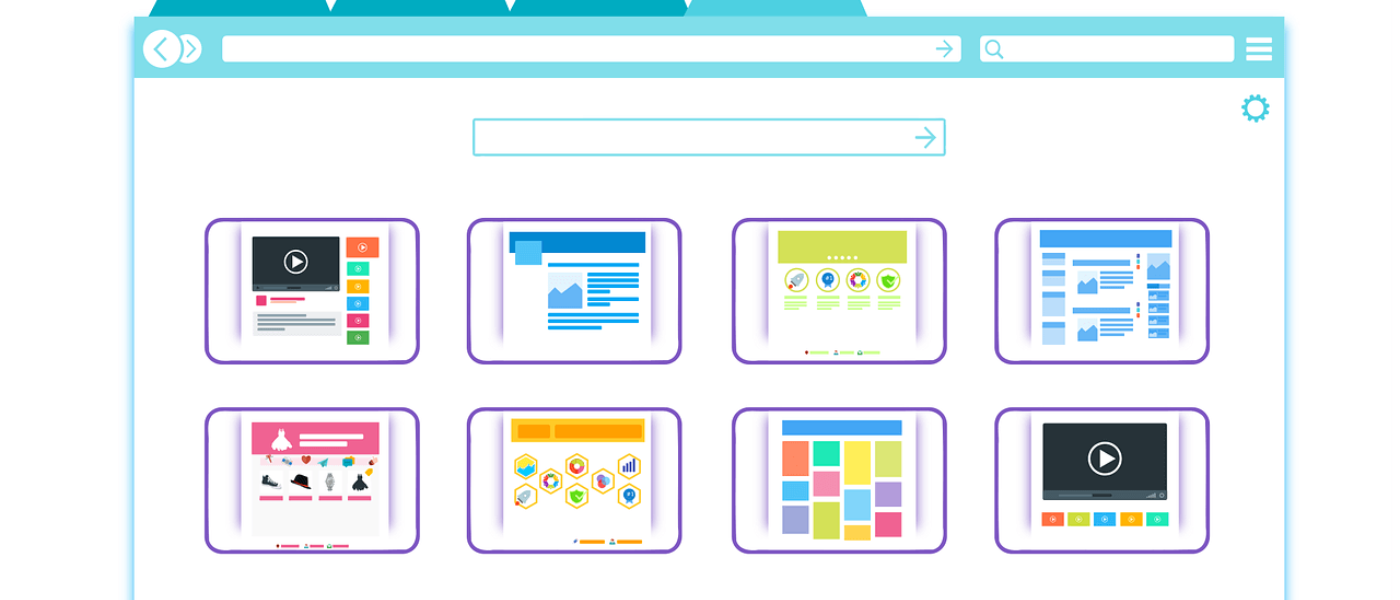According to web design statistics, 94% of first impressions are based on a website’s appearance. People love seeing beautiful designs and at the same time enjoy the simplicity of use. Web design is an essential aspect of a brand, a business’s online presence and has an enormous effect on how users interact with the company.
With modern website design, companies keep their customers, bloggers keep their visitors, and people enjoy what they see. Powerful web design helps increase ROI, but it’s not so easy to achieve since web designers must keep track of the latest trends.
Web Design Stats and Numbers
(Editor’s Choice)
- Building a website can cost as low as £400.
- 94% of first impressions are produced from website design.
- 74% of users come back to the website if it’s mobile-friendly.
- A one-second delay reduces customer satisfaction by 16%.
- Parallax scroll effects might tone down in 2021.
- Eight billion digital voice assistants will be in use by 2023.
- The average salary of a web designer is £33,086 per year.
- 40% of all websites are on WordPress.
General Web Design Statistics
Web design creates first impressions for customers and can make or break a business. User experience is key but not the only ingredient to look at while creating a website. There’s hosting, mobile optimisation, SEO, and other things to consider. Here are some of the most pertinent statistics on web design in 2021.
1. There are 1.7 billion websites on the web.
Based on the latest web design statistics, there are approximately 1.7 billion websites on the web today. This number alone is a good reason to work on creating the perfect web design that will help your brand stand out.
2. The average salary of a web designer is £33,086 per year.
One of the reasons everyone would love to be a web designer is the salary. Web designers from London usually earn around £33,000 per year for creating and maintaining websites, with a median hourly rate of £40.
3. Building a website can cost as little as £400.
According to web design industry statistics, the UK national minimum for designing a webpage is £400, with an average of about £500. Regardless of the price, it’s a worthy investment as building an impeccable website helps attract and retain customers.
4. 40% of all websites are on WordPress.
There are many website builders out there that promise great results, but WordPress still holds the throne. Website statistics show that 40% of websites are built on WordPress. It’s the best content management system to publish on, suitable for both novice and experienced users, offers powerful tools and the freedom to create the website you want. Plus, WordPress hosting can be affordable for those looking to just test the waters.
5. 94% of first impressions are coming from website design.
When a new visitor lands on the page, the web design should be the first thing to catch their attention. Creating a strong first impression matters and will have a lasting effect on the business. Web stats show that 94% of first impressions of an entire business are based on the overall design of their website.
6. 89% of consumers go to a competitor’s website after a poor user experience.
Customers know they have the power, and customer experience data show that 89% of them will undoubtedly leave a poorly designed website and head over to a competitor. According to website design statistics from 2020, poor navigation and bad user experience will chase people off, even if the design is perfect.
7. 84% of UK adults own a smartphone.
The use of smartphones is an integral reason for web developers to focus on creating mobile-friendly websites. According to the latest available data, 84% of UK residents aged over 16 own a smartphone, and they spend approximately 2 hours and 34 minutes browsing various websites daily.
8. 74% of users come back to the website if it’s mobile-friendly.
More than 50% of website traffic comes from mobile phones. Web design growth trends show that businesses need to pay special attention to how their websites are optimised for mobile. In case they fail to provide good UX on a mobile device, 74% of users will leave.
9. A one-second delay reduces customer satisfaction by 16%.
People have less and less attention and patience to wait for websites to load. Customers want to see products and information immediately. Even one second has a huge impact on whether the shopper will stay on the page, reducing customer satisfaction by 16%.

Current Web Design Trends
Website design changes each year, and there’s always something new to implement. Yesterday it was a table of contents; today, it’s voice search and 3D elements. This is why it’s essential to work with a web designer who knows the latest trends and can include them in the design with ease.
10. Users spend 88% more time on pages with videos.
A picture is worth a thousand words, but videos are more powerful. The latest web design industry trends show that including a video on your page drastically increases the time people spend looking at it. The video makes the website more visually appealing and increases interaction since users tend to spend 88% more time on a page with the video on it.
11. 83% of people expect a website to load in 3 seconds or less.
According to current web design trends, page speed is one of the biggest and most common issues website owners face today. According to most recent web design statistics, 83% of users expect the page to load in less than 3 seconds.
12. 68% of consumers say they expect businesses to have more digital capabilities due to the COVID-19 pandemic.
The COVID-19 pandemic forced many businesses to turn towards the digital world, which resulted in an increase in mobile app usage. Unfortunately, some weren’t ready. Based on web design market trends, 68% of users have high expectations for businesses’ digital capabilities. They need the websites to function as intended, with the latest available technological advancements and options.
13. Parallax scroll effects might tone down in 2021.
Parallax scroll has standardised itself as an integral effect since its introduction in 2011. We might see parallax in a subtler light, however, according to future web design trends. While this effect creates depth to websites and provides a more inclusive experience, it can also be distracting and cause disorientation and dizziness. To solve these issues, you might see designers containing the effect on a smaller part of the screen or offering the option to turn it off.
14. There will be increased use of 3D elements.
The latest web design stats show that 3D designs have come a long way. Today, web designers are implementing high-quality 3D visuals that add to the overall user experience. 3D elements positively affect the web design harmony and create a strong first impression when used in simple but purposeful designs.
Future Web Design Trends
The impact of web design won’t decrease in the future. Chances are, web designers will have to include more and more new elements to the web pages and increase user retention. Some of the trends present today that are about to explode in use are voice assistance and cloud computing.
15. 8 billion digital voice assistants will be in use by 2023.
There has been an increased need to reach out to people with disabilities and help them experience various platforms. Voice assistance is on the list of web design growth trends as a tool to help people with poor eyesight and those who love to use smart home devices. Voice search will undoubtedly change how people interact with search engines, meaning web designers will have to adapt to the change.
16. The number of DDOS attacks doubled in 2020.
Since the number of denial-of-service attacks doubled in 2020, chances are these, and other attacks will become more common. These attacks can result in the loss of revenue, meaning that cybersecurity must become an essential part of creating a website.
17. The cloud computing industry’s worth is expected to be $306.9 billion in 2021, with an annual growth of 18% by 2025.
According to web design stats, the cloud computing industry will reach $306.9 billion in 2021 and keep on growing by 18% by 2025. The rise of cloud hosting is driven by the increased need for security, speed, and flexibility.

UK Web Design Statistics — Final Thoughts
Many businesses today realise the importance of web design and thus have no issues with investing a decent amount in the right web designer. Recent statistics show us that modern websites should be mobile-friendly, fast, and pretty but still provide seamless navigation that improves the user experience.
Some of the future trends will revolve around reducing the parallax effect, including voice search, more videos, and 3D elements on a web page, with the goal of increasing user retention.
Frequently Asked Questions
Great web designers are always in demand. According to rough estimates, there are over 50 million web designers ready to create beautiful websites around the world. The UK web design industry is expected to grow, primarily because of the COVID-19 pandemic. Another thing that will boost the industry growth and the demand for web designers is the increasing smartphone use.
Web designers are in high demand, both globally and in the UK. The employment rate is expected to grow faster than other occupations. The increased popularity of mobile devices and the COVID-19 pandemic will boost the need for great web designers who can deliver websites based on the latest industry trends.
The current hourly rate of a decent web designer is around £40. For example, the web designer from London will likely earn approximately £33,000 per year for creating and maintaining websites. The UK national minimum for web design is £400, with an average of about £500. The prices can go lower if you’re looking to hire someone from Upwork or similar platforms, or higher if you’re investing in the well-known web designers in the market.
While there’s no definitive answer to this question, here’s some averages. If you are willing to learn, it may take you from one to three years to learn web design. On average, it takes people two to six years in total. Still, keep in mind that you should also build a strong portfolio of successful web designs to be considered successful in the field, and getting experience may take another year or two.
Some of the most recent trends in web design include 3D elements on web pages, voice assistance and search optimisation, minimising the parallax effect, and turning to cloud hosting. According to web design statistics, these trends change and depend on what users find more useful while being on a website.

